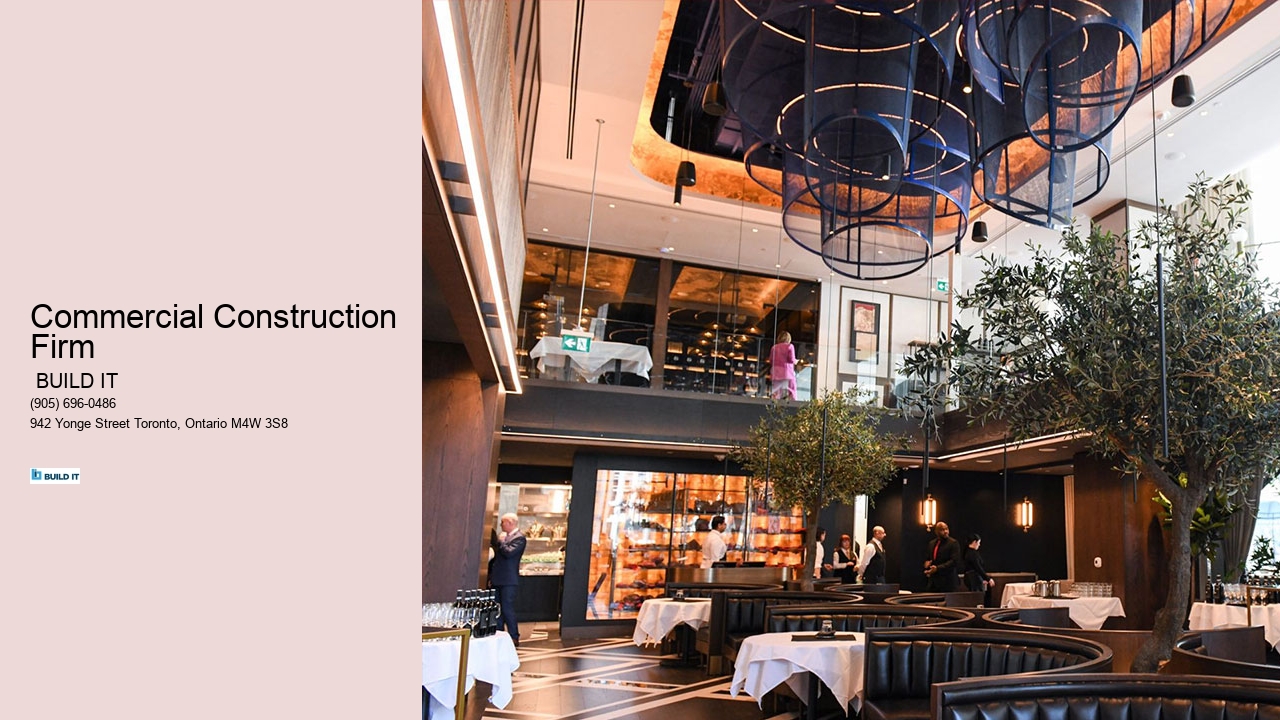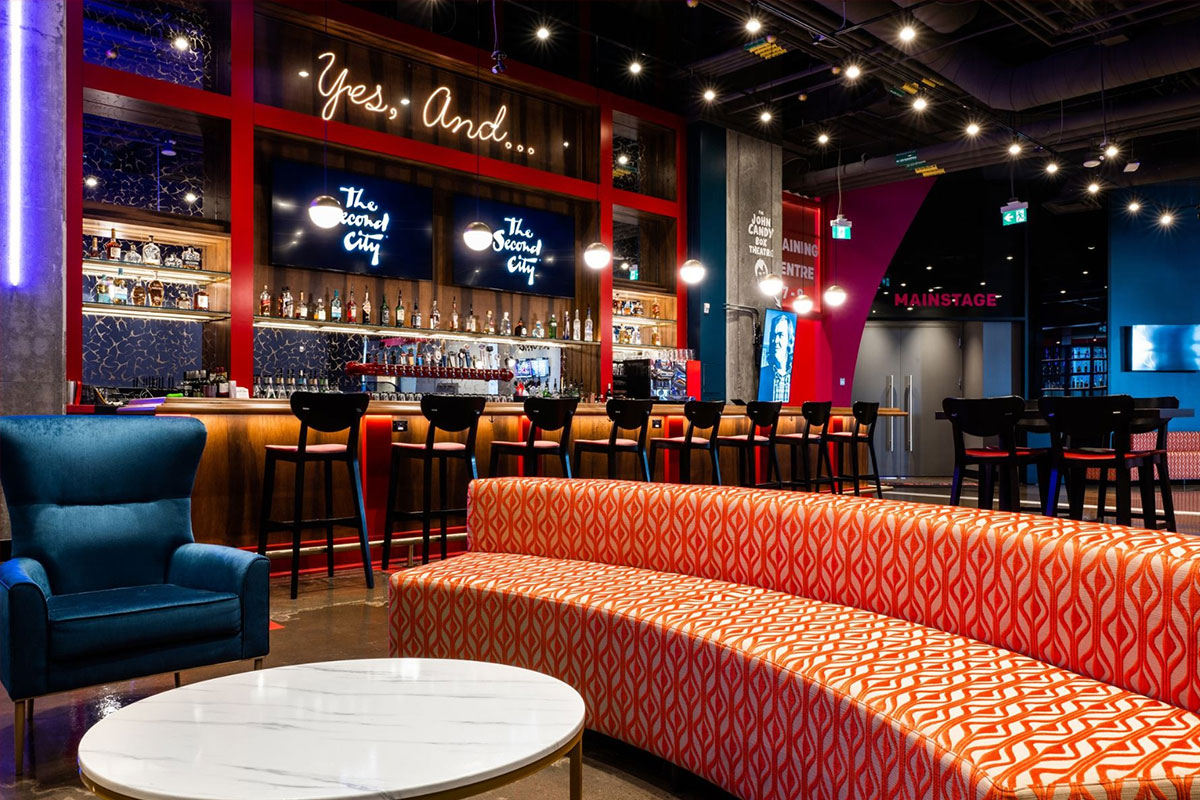

At BUILD IT Toronto, we design and build purpose-driven commercial and industrial spaces that help businesses flourish in one of Canada’s most fast-paced cities. Our expertise in quality construction, coupled with a collaborative approach, makes us the go-to partner for entrepreneurs and national brands alike. From retail and hospitality on Queen West to medical offices in North York and logistical facilities in Scarborough, our work can be seen across the city—and we’re just getting started.
We’re more than general contractors—we’re end-to-end builders. Our services span pre-construction planning, permit coordination, full design-build execution, and final delivery. Keeping the entire process under one roof lets us work more efficiently and communicate more clearly—ensuring your project stays on time and within budget.
With deep roots in Toronto, we understand the local challenges—from intricate zoning regulations to working in high-density environments. Our experienced teams have delivered successful builds across the GTA, including in Mississauga, Etobicoke, Vaughan, and the city core.
We bring this local knowledge to every sector we serve: restaurants, retail stores, healthcare clinics, office spaces, industrial builds, and franchise expansions. Every project is guided by strict safety standards and building codes, while also being thoughtfully designed for day-to-day use.
What truly sets us apart is how we treat our clients. We see each project as a partnership, listening first and tailoring our strategies to your needs. Real-time tools keep you informed, while our experienced team ensures quality and clarity throughout.
If you’re planning a build or renovation in Toronto, choose BUILD IT Toronto for a space that’s functional, stunning, and built for success. Let’s build something exceptional—together.

Green building practices in commercial construction reflect a commitment to environmental sustainability and energy efficiency. These practices are centered around reducing the environmental impact of buildings through thoughtful design, construction, maintenance, and removal. The ultimate goal is to create structures that are well integrated with their surroundings while minimizing resource consumption and improving quality of life for occupants.
One of the foremost aspects of green building is enhancing energy efficiency. This can be achieved through various strategies such as using high-performance windows and insulation, implementing LED lighting, and installing energy-efficient HVAC systems. Additionally, smart building technologies allow for real-time monitoring and optimization of energy use, contributing to significant savings over time.
Commercial contractors are increasingly prioritizing water conservation in their projects by incorporating low-flow fixtures, drought-resistant landscaping, and rainwater harvesting systems. These measures not only reduce the strain on municipal water supplies but also lower utility costs for building owners.
The selection of materials plays a crucial role in green construction. Contractors often opt for recycled content products, rapidly renewable materials like bamboo or cork, and locally sourced goods to diminish transportation-related emissions. Moreover, a focus on durability ensures longer lifespans for components, decreasing the frequency of replacement.
Creating a healthy indoor environment is essential in green buildings. This involves using low-emitting materials that reduce volatile organic compounds (VOCs) along with designing HVAC systems that provide adequate ventilation and air filtration. By doing so, contractors aim to improve occupant comfort and well-being.
The location and development of a site also contribute significantly to its sustainability profile. Commercial contractors work towards safeguarding existing ecosystems while managing stormwater runoff effectively through permeable pavements or green roofs. They may also integrate features like electric vehicle charging stations to support sustainable transportation options.
Lastly, innovation is at the heart of green commercial construction as it drives improvements across all areas mentioned above. Whether it's through exploring new methods for reducing carbon footprints or utilizing cutting-edge technology like building information modeling (BIM) for enhanced project coordination – innovation leads to smarter decisions that pave the way forward for eco-friendly construction practices.
| Commercial Design & Project Management | |
|---|---|
| Commercial Design Build Firms | Single-source solutions for design and construction integration. |
| Commercial Pre-Construction Services | Planning, budgeting, and scheduling services before building begins. |
| Commercial Construction Management | Professional oversight and coordination of commercial projects. |
| Commercial Property Builders | Builders specializing in retail, office, medical, and mixed-use spaces. |
| Custom Commercial Build | Tailored construction services for unique business needs and branding. |
Tenant improvements, often abbreviated as TIs, refer to the customized alterations a building owner or landlord makes to rental space as part of a lease agreement, in order to configure the space for the needs of the tenant. These modifications can range from minor changes like painting walls and installing new carpeting to major renovations such as adding new rooms or altering plumbing and electrical systems. The specifics of who pays for these improvements can vary greatly and are typically outlined in the lease contract.
The negotiation process is crucial when it comes to commercial tenant improvements. Tenants should aim to understand what improvements are necessary for their business operations and negotiate those with landlords before signing the lease. The contract should detail who will manage the construction process, which party is financially responsible for each aspect of the improvement, and how much control over design and contractors each party has. It's also important that tenants ensure there is an agreed-upon timeline for completing these improvements so their business operations are not unduly disrupted.
One key question many tenants have is who foots the bill for these tenant improvements. The answer varies: sometimes landlords offer a tenant improvement allowance (TIA), which covers all or part of the costs associated with making renovations. In other cases, tenants may need to pay upfront but might be able to negotiate lower rent or a longer lease term in return for their investment in improving the property. Additionally, it's important that both parties consider how these costs will affect depreciation schedules and tax implications.
After tenant improvements have been made, maintenance and repair responsibilities should not be overlooked in any commercial lease agreement. Generally, tenants are responsible for maintaining their leased spaces unless otherwise specified by a contract clause stating that certain responsibilities fall on the landlord’s shoulders. This includes repairs that may result from wear and tear over time or issues directly related to the initial tenant improvement work done on the property. Clear communication about maintenance expectations can help prevent conflicts during and after renovation projects.

It includes design, permitting, site prep, construction, inspections, and final handover.
Delays, cost overruns, permitting, supply chain issues, and labor shortages.
They offer planning, permitting, site work, structural building, interior finishing, and project management.
You gain faster delivery, single-point accountability, improved collaboration, and often lower costs.
Look for experience, licensing, references, financial stability, and clear communication.